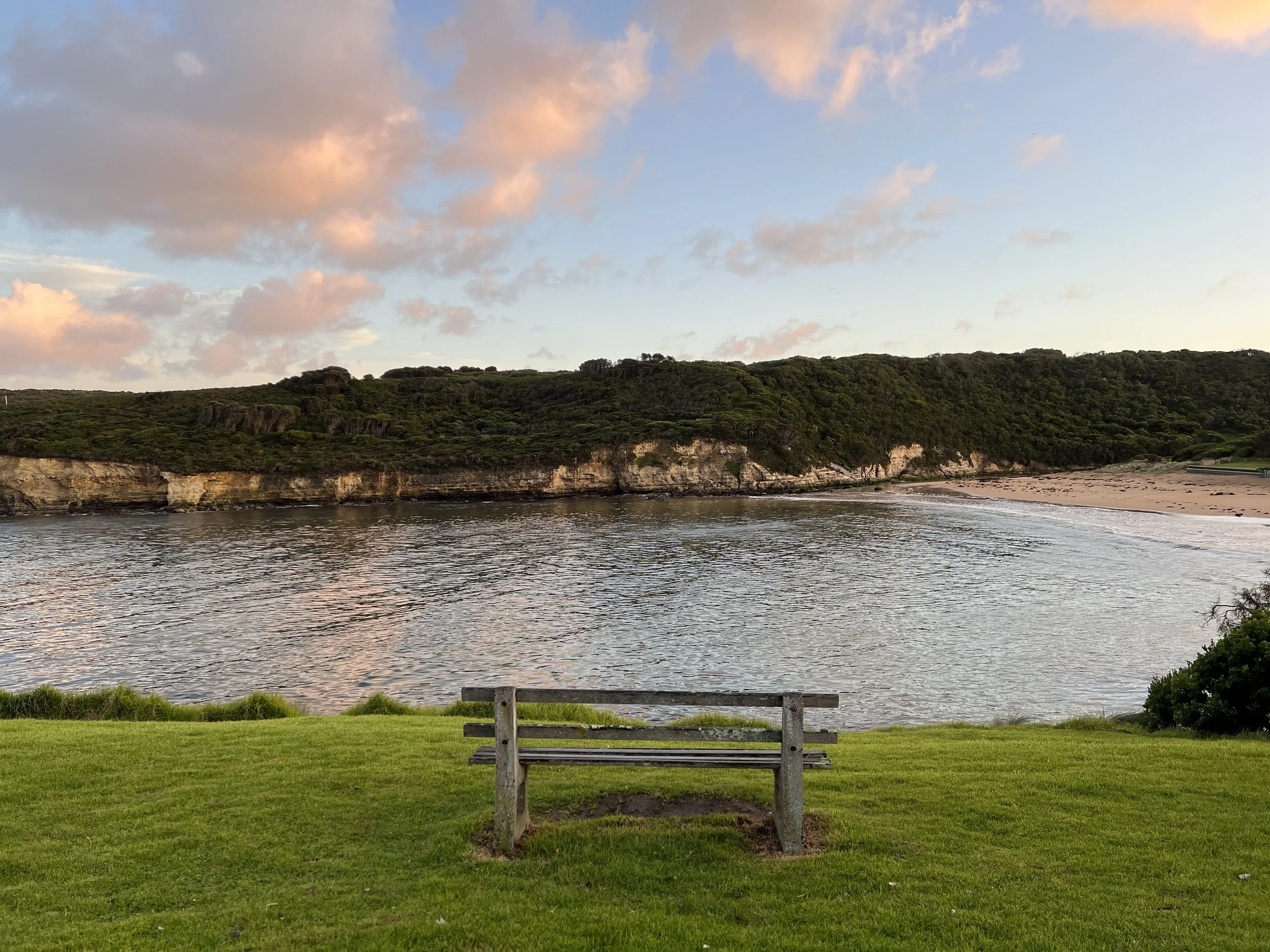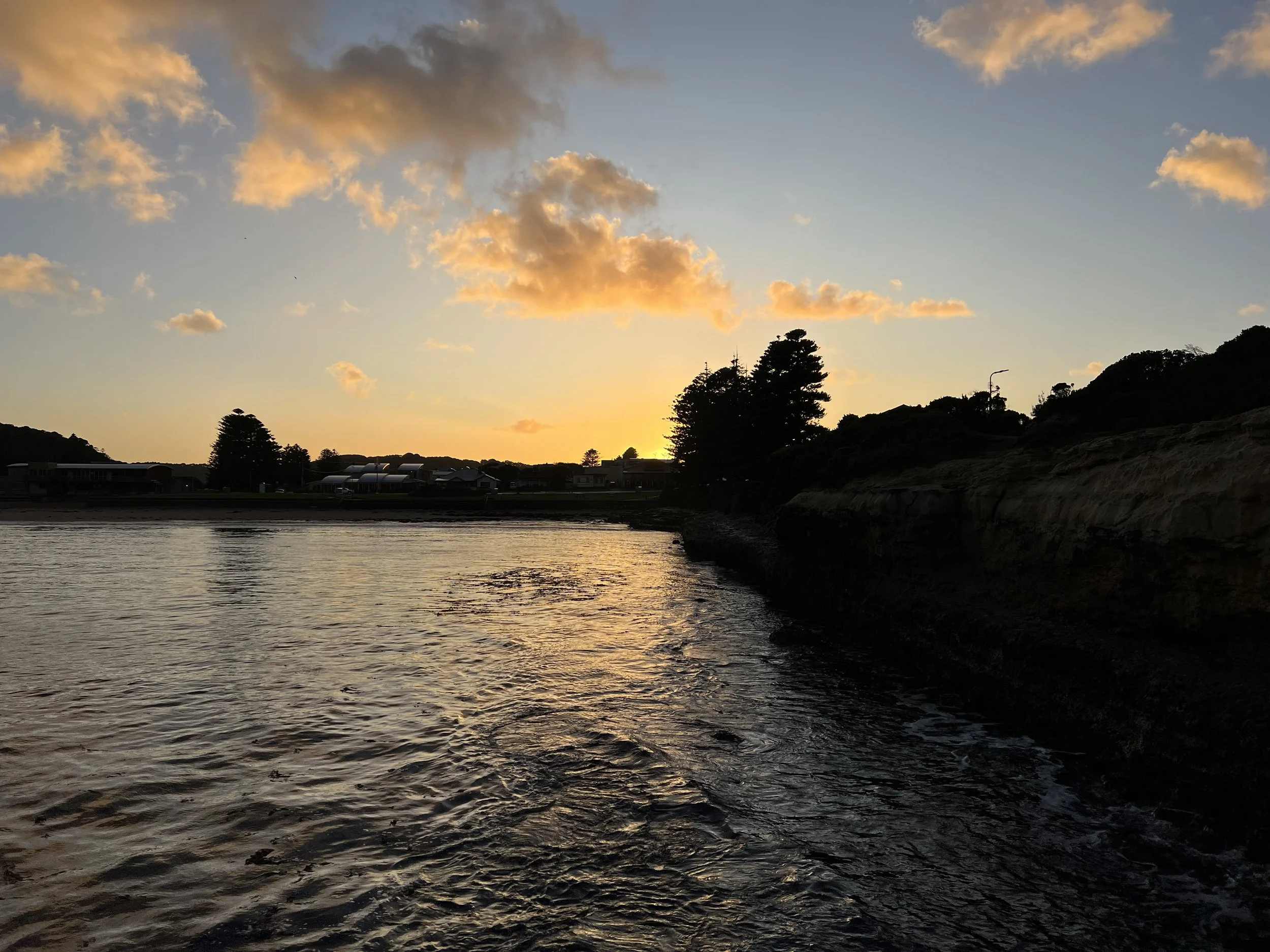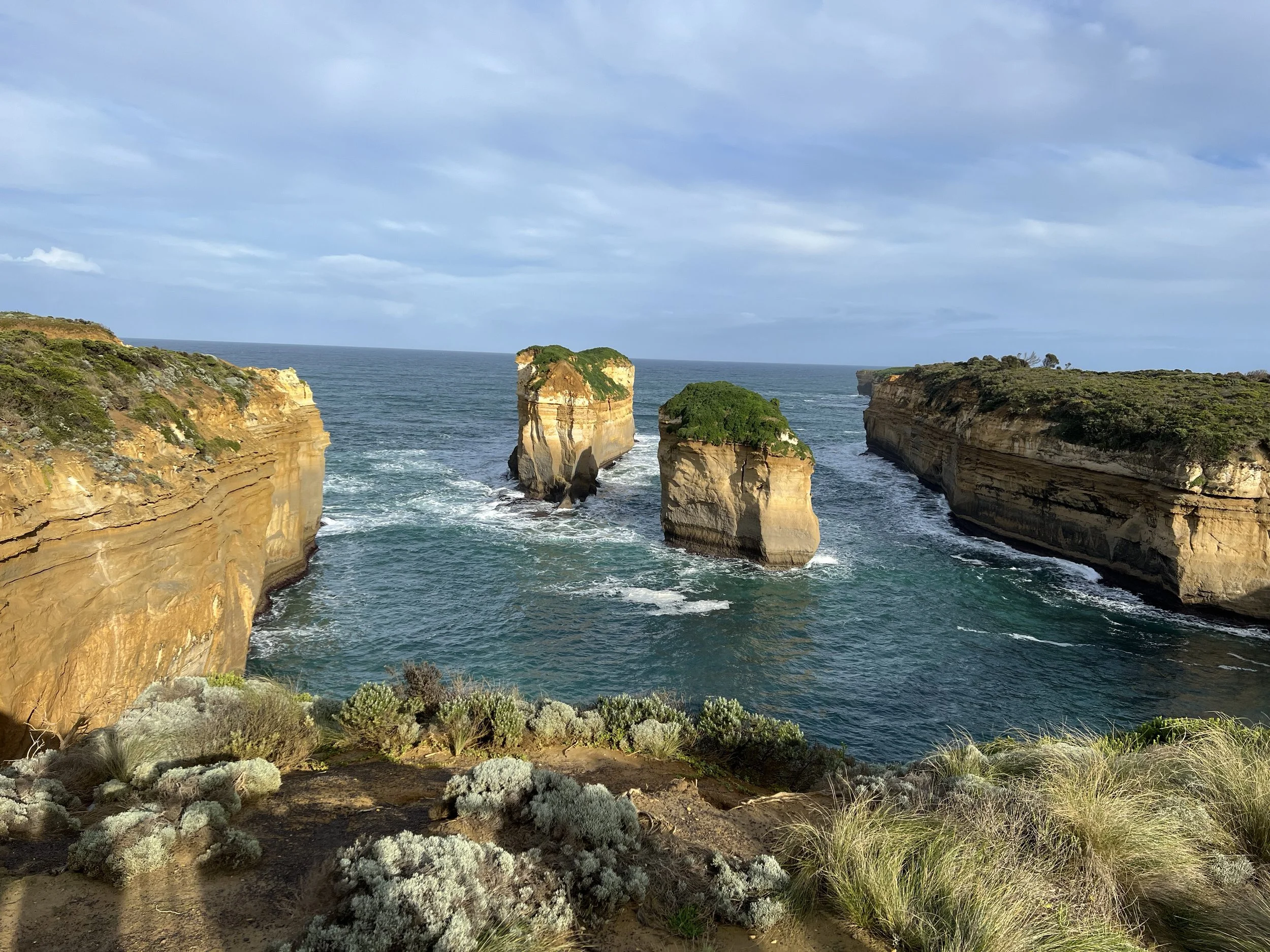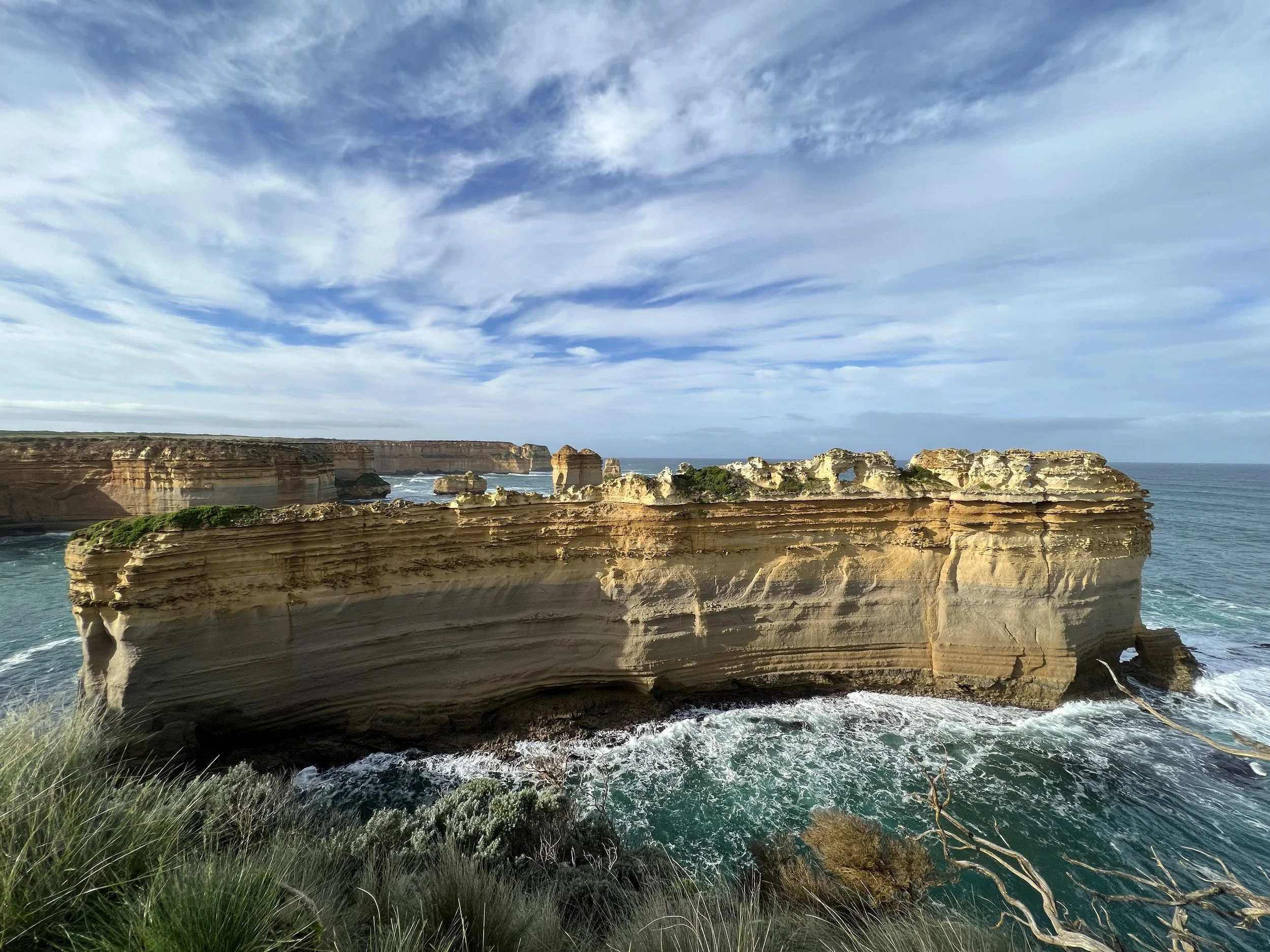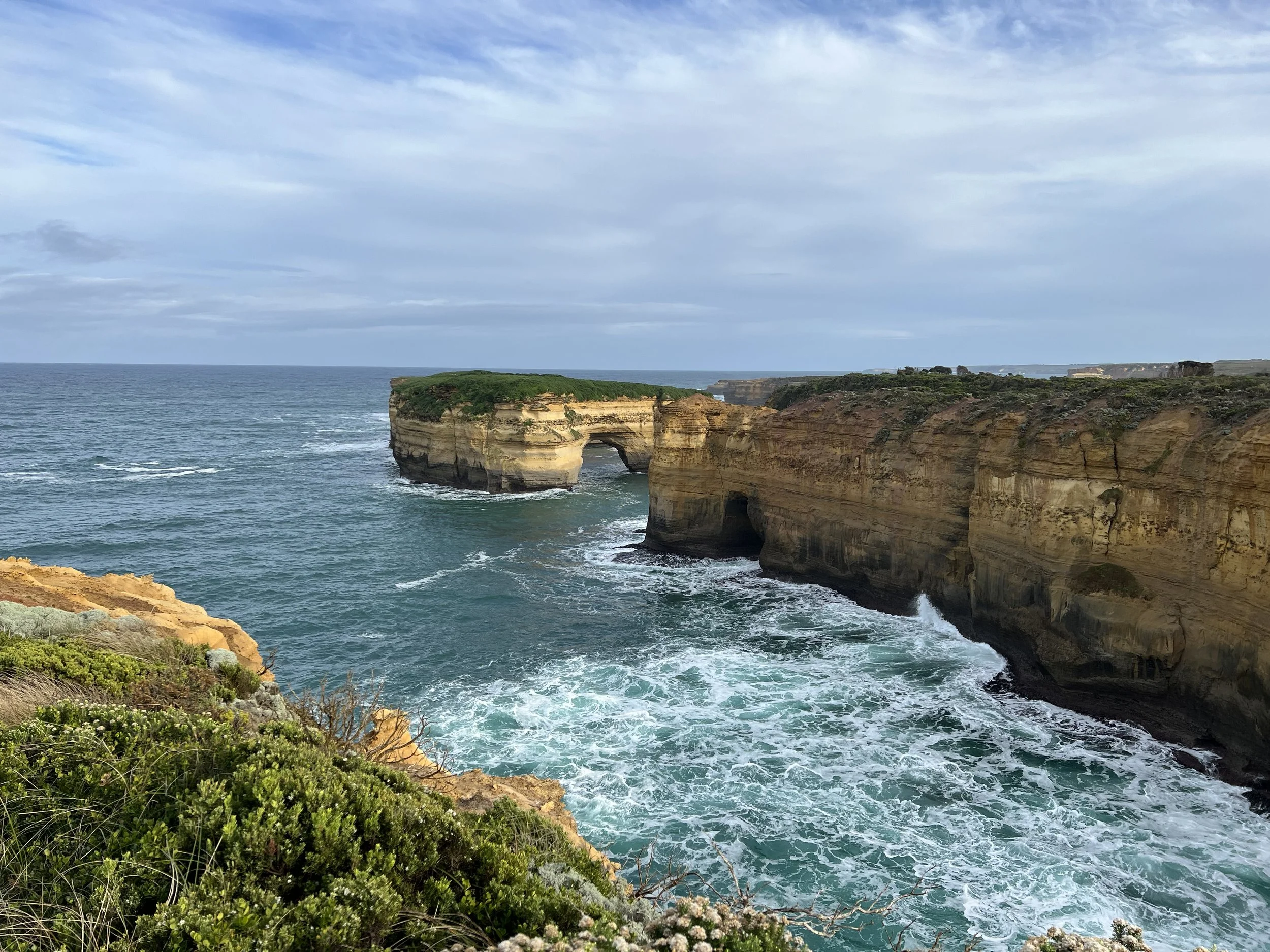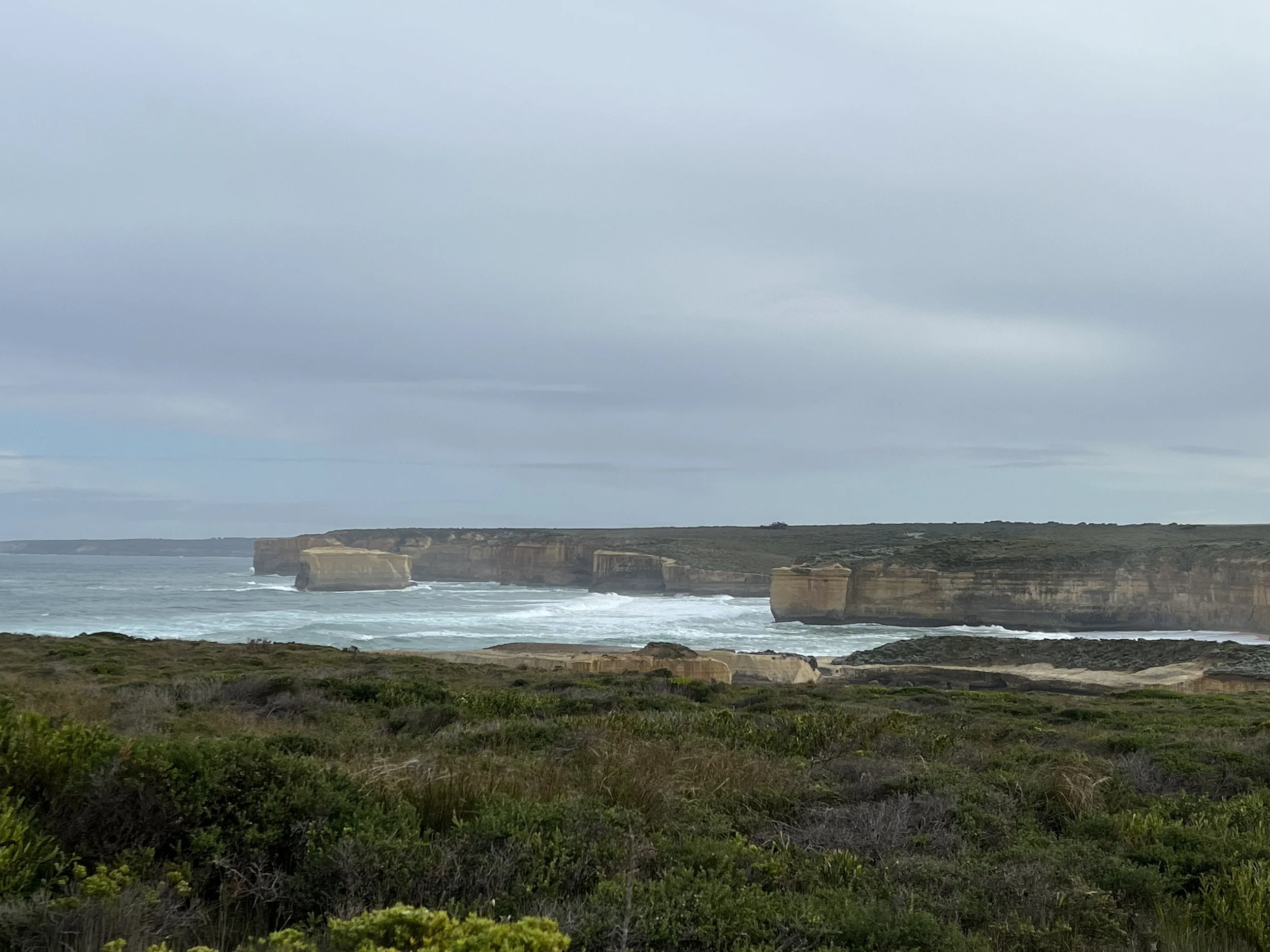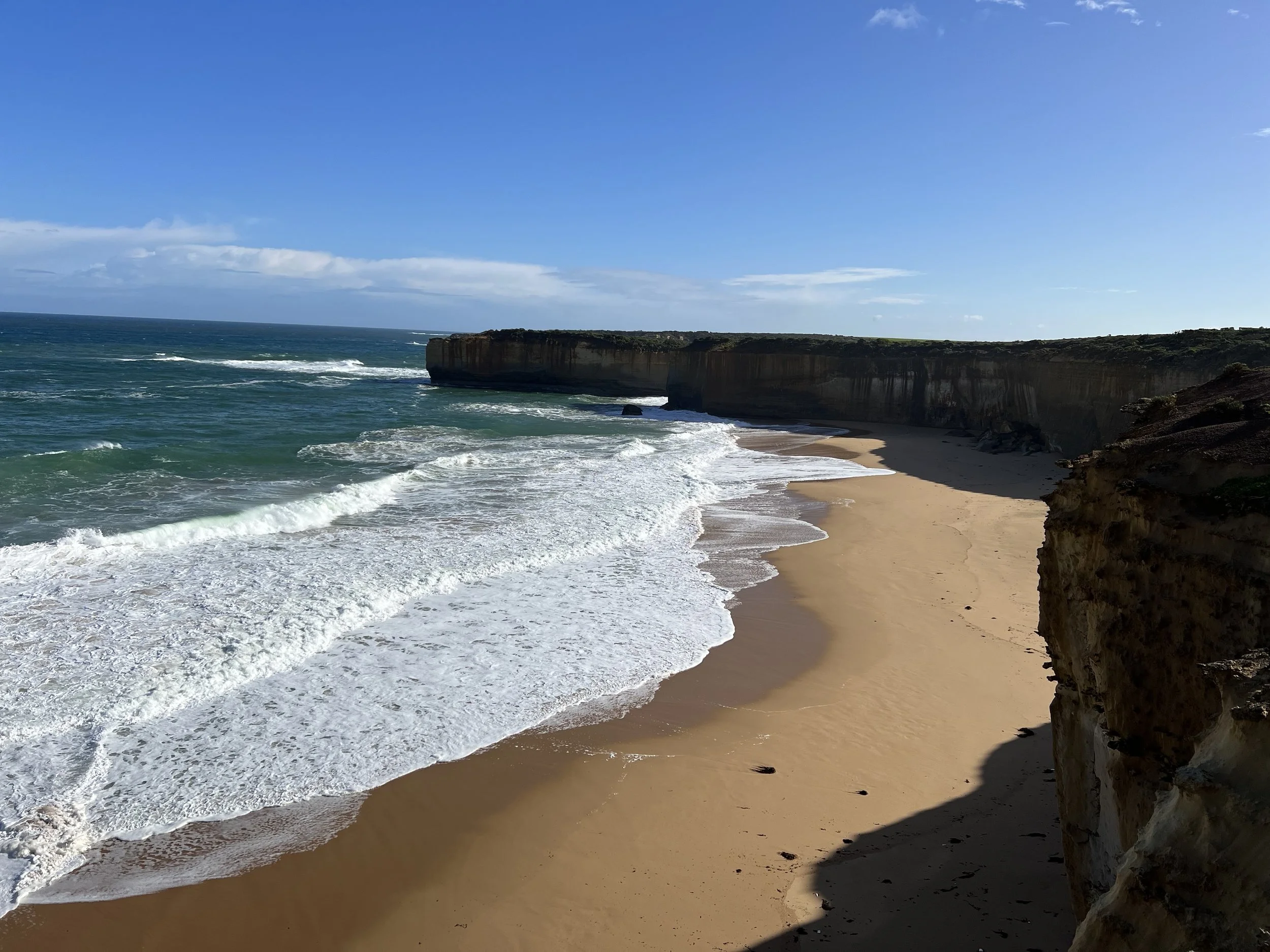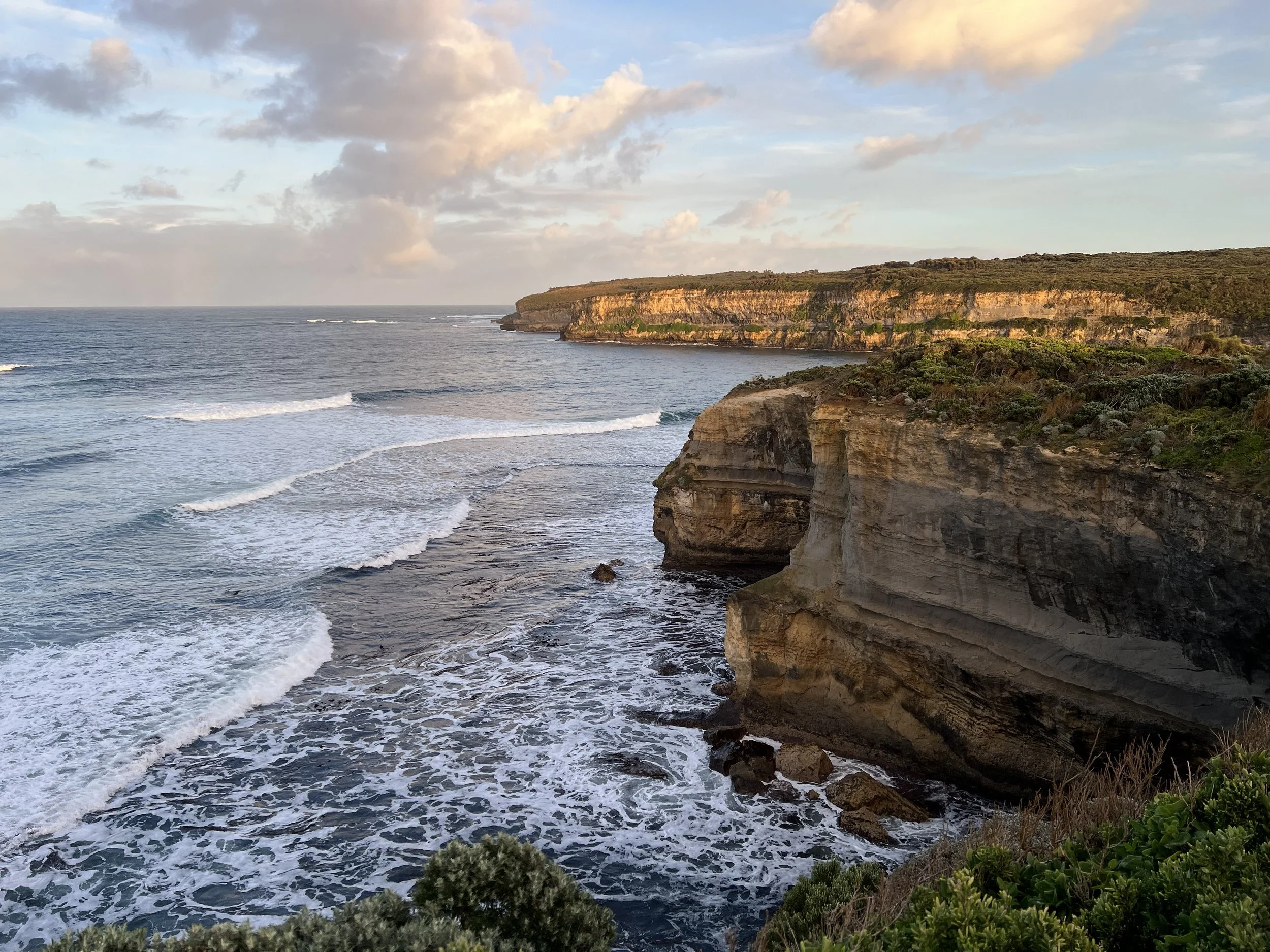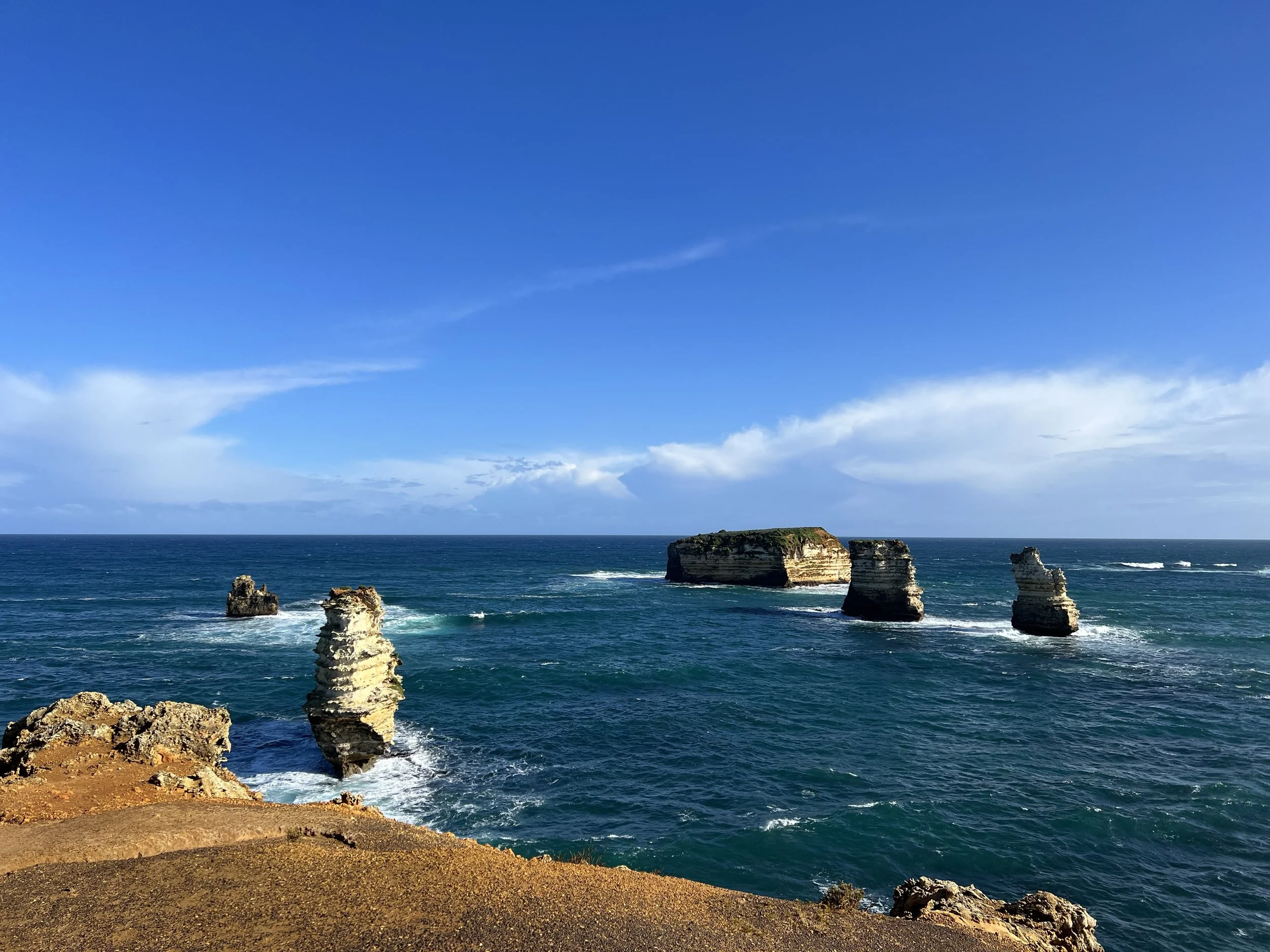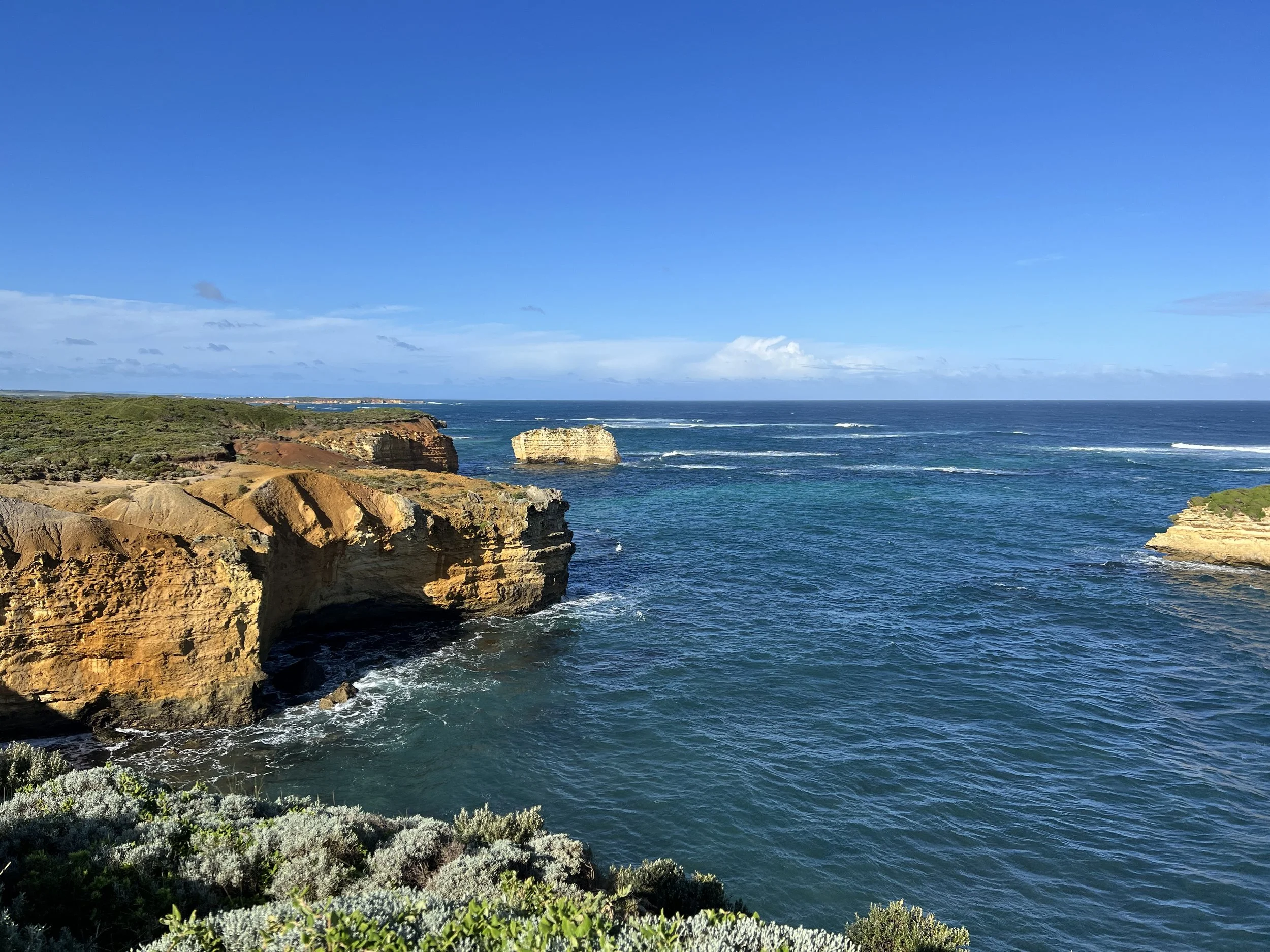Great Ocean Road - Day 2: Victoria, Australia
After a great night’s sleep in Port Campbell, we set out again to see the final few sights along the Great Ocean Road before making our way back to Melbourne. Once we checked out, our first stop was Prady’s Lookout, a quiet coastal viewpoint right in Port Campbell. The sun had already risen, but the sky was still glowing with a warm orange hue over the ocean. Even without the full sunrise, the stillness of the morning and the soft light made the short stroll incredibly peaceful. After taking in the view, we headed to a nearby café for breakfast.
With food in our system, we backtracked slightly to visit Loch Ard Gorge and The Razorback—two of the most dramatic landscapes within Port Campbell National Park. Loch Ard Gorge comes with a somber story. In 1878, the clipper ship Loch Ard wrecked in heavy fog, crashing into Mutton Bird Island. Of the 54 on board, only two teenagers survived: Tom Pearce, a ship’s apprentice, and Eva Carmichael, a passenger emigrating with her family. Tom managed to swim ashore, then spotted Eva struggling in the water and brought her to safety in the gorge. He later climbed the cliffs to find help, leading to their rescue. As I walked the paths around the gorge, it was difficult to imagine such a tragedy unfolding in a place so breathtakingly beautiful. A lookout named after Tom and Eva commemorates their incredible story.
Nearby, The Razorback stands tall—an elongated limestone formation sculpted over time by relentless wind and waves. Its sharply defined silhouette resembles the spine of a creature, which is how it earned its name. Together with the Twelve Apostles, Loch Ard Gorge and The Razorback form some of the most iconic coastal formations in the region.
After finishing the trails around the gorge, we continued toward London Bridge. This natural offshore arch was once connected to the mainland by two spans, but in 1990, the inner span suddenly collapsed. Two tourists who had walked out onto the remaining outer section became stranded and had to be rescued by helicopter. The dramatic story is now part of the site’s history, adding to its already imposing presence.
Our final major stop for the day was the Bay of Islands. The coastline here is incredibly striking—sheer cliffs, scattered limestone stacks, and wide open ocean views. These formations are more spread out compared to the Twelve Apostles, creating a vast landscape of isolated “islands” rising from the water. It was a beautiful and quiet place to end my Great Ocean Road journey. I wandered the trails for a while, taking in the views one last time before we began our inland drive back toward Melbourne.
Background
The Great Ocean Road’s western section—from the Twelve Apostles through Port Campbell to the Bay of Islands—is known as the Shipwreck Coast, a stretch infamous for treacherous waters that claimed more than 600 vessels between the 1830s and early 1900s. Loch Ard Gorge is named after the Loch Ard, the most well-known shipwreck in the region, and its story captures the danger sailors faced navigating this rugged coastline. Over millions of years, the limestone cliffs here have been shaped by powerful winds and waves, creating dramatic formations such as The Razorback, London Bridge, and the towering stacks of the Bay of Islands. Today, this entire coastal corridor forms one of Australia’s most iconic geological landscapes, protected within Port Campbell National Park and surrounding reserves.
Getting There
Day 2 begins in Port Campbell, making it an easy drive to several major landmarks in the national park. From town, it’s only a short trip to Loch Ard Gorge, The Razorback, and London Bridge, all connected by well-signed pullouts along the main coastal road. Travelling between these points is straightforward, and each stop offers designated parking areas and accessible walking paths. After visiting the Bay of Islands near Peterborough, most travellers return to Melbourne via the inland route rather than retracing the coastal drive. This route is faster, smoother, and provides a simple transition from coastal scenery back to urban Melbourne.
Route Overview
Itinerary: Port Campbell → Loch Ard Gorge → London Bridge → Bay Of Islands → Logans Beach → CBD Melbourne
Distance: 262 km
Duration: 7 hr (driving & sightseeing)
Cost Breakdown
Food: AU$130
